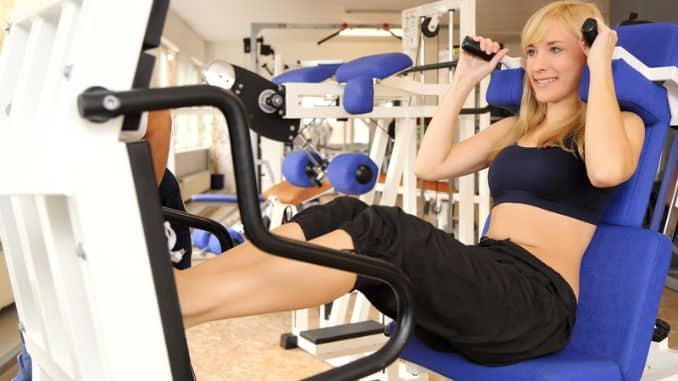
Today let’s talk about back dysfunction. To speak on that topic, here is John Izzo.
Here at EFI, we have chatted about John before. I reviewed his Lunging to Improve Performance a few months back. A few weeks back, we were talking about back dysfunction. It was based on what I learned from watching his Shatterproof Spine program.
I asked if he could expand on things and share what he had said with EFI readers.
Take it away, John.
In this day and age of technology, sedentary lifestyles, and poor posture—all trainers have their hands full trying to enforce optimal exercise execution. And I don’t simply mean “not swinging the arms” during biceps curls or “not going low enough on barbell squats.” I am referring to minimal deviations in optimal Performance.
Common Rookie Trainer Mistakes
Starting with advanced exercises is the most popular and unknowing mistake made by exercisers in gyms today. Users commit this mistake when they choose complex activities or heavy loads without working with progressions first. A more significant error personal trainers commit is not assessing clients before beginning an exercise program.
How do people in the gym commit this mistake? They lack proper instruction, coaching, and body awareness. Most novice exercisers don’t know how to “feel” a muscle during specific movements or drills. Their bodies are loaded with muscle imbalances and compensations that further exacerbate dysfunction without them knowing.
Trainers miss these subtle hints because most trainers do not perform movement assessments, or they don’t have the keen eye to spot everything during a movement. Competency in basic anatomy and exercise biomechanics polishes that keen eye.
Body Movement versus Machine Movement
Most trainers and exercisers assess capability with a loaded exercise’s “first set.” I’m sure you’ve seen it or experienced the “Express-Line” at your local commercial fitness facility. Trainers are instructed to orient new exercisers on strength machines consisting of 6-12 exercises without a movement screening or basic assessment. Once a client is placed on a device, a load is set, and there you have it: the trainer “no longer” pays attention to the body’s mechanics. They only focus on the proper “usage of the machine.”
Importance of the Keen Trainer Eye
Other trainers that do not place their clients on machines but try to incorporate “core” or free weight exercises usually miss essential points. Clients will perform a squat with a shoulder press using dumbbells –because the trainer has informed them that it is “a great multi-joint exercise that utilizes a lot of muscles and therefore, burns a lot of calories.”
However, without a proper assessment or keen eye for cueing, the nervous system engraves the dysfunction once a load is introduced, such as body weight or dumbbells, and the movement has not been adequately coached or assessed. This is a perfect example of building on top of dysfunction: Check out this poorly executed glute extension.
The video shows a constant pelvic rotation without any proper spine alignment. Sure, her buttocks area is getting a great workout, but at the expense of the regular course at the lumbar spine. Recent research from Dr. Stuart McGill shows that rotating the lumbar spine contradicts low back health.
5 Stage Approach to Exercise Program Design
Witnessing many of these unfortunate instances in the gym and listening to tales of poor training programs used by my clients in the past, I began studying much of Dr. Stuart McGill’s work. Dr. McGill is a world-renowned low back researcher based in Canada and has done a tremendous job covering the back in his book, “Low Back Disorders.” After reading this research and implementing many of the protocols, I began implementing a 5 stage approach to exercise program design.
This 5 stage progression looks like this:
- Stage 1: Corrective Exercise
- Stage 2: Stability
- Stage 3: Endurance (training core with fatigue)
- Stage 4: Strength
- Stage 5: Power & Speed
I sometimes blend, modify, or execute these five stages differently depending on the client’s fitness level and the qualitative data I get from the movement screening and the initial assessment.
Furthermore, the time it takes the client to progress from stage to stage depends significantly on frequency, exercise adherence, and present fitness level. My job is not to keep them in a “corrective state” if their goal is to lose body fat. More than likely, when excess body fat loss has occurred, most corrective measures tend to clean up themselves–helping me concentrate on the next stage or combining modalities. Sounds meticulous? It’s not. The end goal is to optimize movement AS BEST AS POSSIBLE. You may never have textbook action, but you can improve the action by following these steps.
Some “fussy-ness” or “exactness is essential when observing a client exercise.
Does it mean that you should try to correct every little thing?
Not. If you employ that idea, you will never progress. The culmination is the game’s name, and once a client or exerciser sees results, you have achieved most of your mission.
Assessments will help trainers and exercisers better understand how an exercise affects the movement pattern and muscles. This type of feedback can minimize dysfunction, and function should be optimized. The work of Stuart McGill is explained in simplistic terms and practiced in this new workshop video, Shatterproof Spine.
John Izzo is a prolific fitness blogger, excellent trainer, and cool guy.
Thanks, John.
Great to have you here at EFI. Thank you for sharing your knowledge, expertise, and passion with us.
Rick Kaselj, MS


